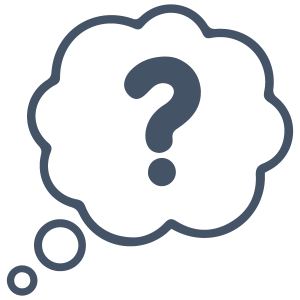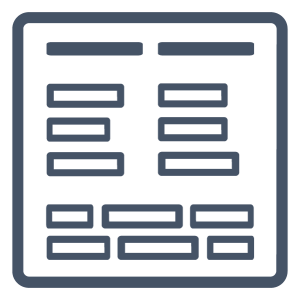Week 7: Evaluating sources IV
SIFT framework for online information

Overview
This week, we work with a second framework for evaluating information: SIFT, which specifically focuses on evaluating web resources.
SIFT is designed to facilitate a critical approach to thinking about information published and accessed online.
The acronym stands for:
- Stop
- Investigate the source
- Find trusted coverage
- Trace claims, quotes, media to original content
As we discussed last week, it is critical to question the authority of those who publish information—both in print and digital formats—in order to understand the inherent biases in any publication.
In particular, with information disseminated online through a variety of platforms (e.g., newspapers, government agencies, social media sites), readers can easily encounter and access factual information as well as misinformation and disinformation (forms of false information).
Faced with this array of “true” and “false” information can be overwhelming and we can benefit from using a reasonable set of criteria to determine if information is appropriate for academic work.
Readings
Section I: Evaluating online sources
Caufield, M. (2017). Web literacy for student fact-checkers … and other people who care about facts. https://webliteracy.pressbooks.com/front-matter/web-strategies-for-student-fact-checkers/
CrashCourse. (2019, Feb. 15). Using Wikipedia: Crash Course navigating digital information #5 [Video]. YouTube. https://youtu.be/ih4dY9i9JKE
CTRL-F. (2020, September 9). Introduction to CTRL-F with Jane Lytvynenko and Mike Caulfield [Video]. YouTube. https://youtu.be/ZRxOoCYWqbQ (2:17 minutes).
CTRL-F. (2020, May 14). Mike Caulfield: Digital literacy expert [Video]. YouTube.
https://youtu.be/-6TvuqjoxGA (1:30 minutes).
CTRL-F. (2020, May 22). Evaluate expertise with Mike Caulfield [Video]. YouTube.
https://youtu.be/4GKpUNQNkLU (4:33 minutes).
CTRL-F. (2020, September 11). Skill: Just add Wikipedia with Mike Caulfield [Video].
YouTube. https://youtu.be/Kq2q4Nx5epU (4:31 minutes).
CTRL-F. (2018, May 25). Who controls what I see online [Video]. YouTube
https://youtu.be/VLVff8Y8dHo (3:39 minutes).
TED. (2011, May 2). Beware online “filter bubbles” | Eli Pariser [Video]. Youtube. https://youtu.be/B8ofWFx525s (9:04 minutes)
Poole, T. (Host). (2021, April 22). How do I know what’s true on the internet? (Season 3, No.4) [Audio podcast episode]. In Tai asks why. CBC. (30 minutes) https://www.cbc.ca/radio/taiaskswhy
Before class activities
 Key questions to ask while reading and watching
Key questions to ask while reading and watching
- What is information pollution?
- What are the similarities and differences between misinformation and disinformation?
- What are the strategies that can help us identify trusted sources online?
- How can these strategies be used in our everyday search for information sources?
 “Pile of words”: Group and label key concepts
“Pile of words”: Group and label key concepts
Organize into two lists of similar terms and label each list (include definition of each label).
Remember: You may already understand some of these ideas relatively well and others may be new to you—you are encouraged to look up (e.g., in a dictionary or encyclopedia) the unfamiliar concepts in order to create your lists.
Make note of your reasons for grouping the ideas together as you will share them in class. These are self-paced individual activities, for which there are no right or wrong answers. The instructor will not grade this work.
 Predict a learning outcome
Predict a learning outcome
After class activities
After class, annotate each reading for key ideas. For videos and podcasts, you can annotate the transcript.
Summarize the author’s key ideas from each reading.
Highlight the following information:
- Purpose of the reading;
- Scope (the extent of the study);
- Thesis (the main argument[s]);
- Method (research method if applicable);
- Outcome(s) and conclusion.
Respond to the following statement about the readings: do you agree or disagree with the statement and why?
“The web is both the largest propaganda machine ever created and the most amazing fact-checking tool ever invented” (Caufield, 2017).
Did this reading provide any inspiration or insights you can use in this or any of your other classes? If yes, what is the inspiration and/or what are the insights?

